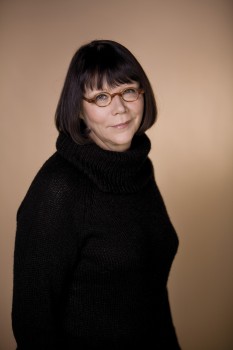Search results for "jarkko laine prize"
Tales of the night
22 November 2013 | Comics, Fiction
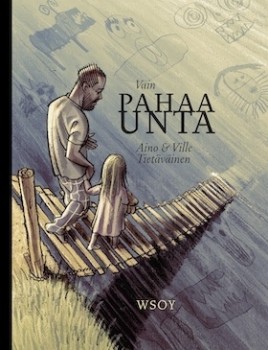 The father is woken up in the middle of the night because his small daughter suffers from nightmares. He asks her to tell him about them so they won’t frighten her any longer. Giant bunnies wearing high heels chase little Aino, a scary three-eyed gnome pours apple jam onto her, Daddy has turned into a dog….
The father is woken up in the middle of the night because his small daughter suffers from nightmares. He asks her to tell him about them so they won’t frighten her any longer. Giant bunnies wearing high heels chase little Aino, a scary three-eyed gnome pours apple jam onto her, Daddy has turned into a dog….
Graphic artist Ville Tietäväinen began writing down Aino’s dreams when she was three, and together they illustrated them. The result is a graphic storybook entitled Vain pahaa unta (‘Just a bad dream’, WSOY, 2013).
Visible in the background are selected quotations from books on dreams and nightmares.. Aino’s nightmares are certainly produced by a lively imagination, making this an excitingly quirky book.
It was selected as one of the six runners-up of the Finlandia Junior Prize 2013; the winner will be announced on 26 November. (We tend to think, though, that Vain pahaa unta is definitely a more interesting read for daddies than kiddies.)
Indebted to the centuries
30 September 2007 | Archives online, Fiction, poetry
Poems from Jouni Inkala’s Minuutin ja sen puolikkaan laajenevassa universumissa. Valitut runot 1992–2007 (‘In a minute and its half’s expanding universe’, WSOY, 2007)
Tail references
Mice don’t know that in the case of a human being
the death of a dear one may paralyse
a person’s capacity for years and years.
But in two things they’re more experienced than we.
They understand they’re in constant mortal danger.
That the trap is swift and silent.
That poison is a tear of awareness rising from the heart.
They also realise that in a cat’s claws they fly
like jackknives in the hands of a knife thrower.
And that when the audience finally gets round
to wakening up their hand~ in a rising storm of applause,
they won’t be distinguishable from the arena spotlights
or the ringmaster’s tails.
After their full term of service the mice pass out
from this time to the other side, and there see a miracle:
the sun’s heart beating six hundred times a minute.
In Helsinki, recalling
the Pinder Circus
Martti Anhava: Romua rakkauden valtatiellä. Arto Mellerin elämä [Garbage on the highway of love. The life of Arto Melleri]
10 November 2011 | Mini reviews, Reviews
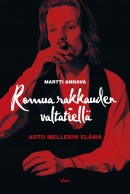 Romua rakkauden valtatiellä. Arto Mellerin elämä
Romua rakkauden valtatiellä. Arto Mellerin elämä
[Garbage on the highway of love. The life of Arto Melleri]
Helsinki: Otava, 2011. 687 p., ill.
ISBN 976-951-1-23700-6
€ 36, hardback
Arto Melleri (1956–2005) has been called the last Finnish bohemian poet. At the age of 35, he received the Finlandia Prize for a collection of poetry entitled Elävien kirjoissa (‘In the books of the living’) as well as an invitation to the Independence Day celebrations at the Presidential Palace, from which he was thrown out. The literary editor Martti Anhava traces his friend’s life from his schooldays in Ostrobothnia to his turbulent life in Helsinki. There are interviews with family members, friends, writers, musicians, theatre-makers; Melleri wound up studying dramaturgy at the Theatre Academy. The year 1978 saw the presentation of Melleri, Jukka Asikainen and Heikki Vuento’s play Nuorallatanssijan kuolema eli kuinka Pete Q sai siivet (‘The death of a tightrope walker or how Pete Q got wings’). Breaking completely with the mainstream political theatre of the 1970s, it became a cult show. The last volume by this poet of bold, often cruelly romantic visions was Arpinen rakkauden soturi (‘The scarred soldier of love’, 2004).
Translated by Hildi Hawkins
In this room, or elsewhere
31 March 1994 | Archives online, Fiction, poetry
‘Some people play bridge; some people shoot pool; we read and write poems’, says Jouni Inkala (born 1966) of his generation of poets. These poems from his prize-winning first collection of poems, Tässä sen reuna (‘Here is its edge’, WSOY, 1992)
Behind the window, wet snowflakes rise and descend,
cold white insects.
In the summer, their brothers swirled in the sun’s low,
silent volleys,
as I sped on my bicycle through the dark gullet of spruce-rows some always filtered into my eyes, my mouth.
They were cool, even then.
Now I sacrifice toenails, relinquish some of my own warmth to the back of an armchair.
As a dark, painful spot in God’s brain,
which is unknown
as long as it isn’t troubled into truth,
pain made visible, known. More…
Annika Luther: Brev till världens ende / Kirje maan ääriin [Letter to the ends of the earth]
3 March 2009 | Mini reviews
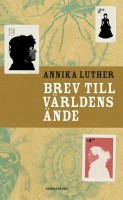 Brev till världens ände
Brev till världens ände
[Letter to the ends of the earth]
Helsingfors: Söderströms, 2008, 184 p. .
ISBN 978-951-52-2566-5
€ 18, paperback
Kirje maan ääriin
Helsinki: Teos, 2008, 197 p.
Suomentanut [Translated into Finnish by] Tarja Teva
ISBN 978-951-851-180-2
€ 21, paperback
This story involves the identity crisis of two boys, a discussion of the human ecological footprint and the growing loss of a relationship with nature. Viktor and Jeppe have been friends since childhood until the mysterious Maira upsets the boys’ relationship. Annika Luther (born 1958) is not content to write a traditional triangle drama – instead she seasons it with Viktor’s betrayal, an act committed in a fit of jealousy that has unforeseeable consequences. The novel’s power lies in its ever-increasing tension, as the trust between the boys breaks down. The plotline is occasionally unconvincing, but at the heart of the novel is the fickle human mind, stripped of all its trappings. The book received the 2008 Topelius Prize.
What Finland read in November
16 December 2011 | In the news
 The latest thriller, Teräsleijona (‘Steel lion’, WSOY), by Ilkka Remes (his 15th) was at the top of the November list of best-selling fiction titles in Finland, compiled by the Finnish Booksellers’ Association.
The latest thriller, Teräsleijona (‘Steel lion’, WSOY), by Ilkka Remes (his 15th) was at the top of the November list of best-selling fiction titles in Finland, compiled by the Finnish Booksellers’ Association.
The second place was occupied by Jari Tervo’s Layla, the third by Minä Katariina (‘I, Catherine’, Otava), a Finlandia Prize -listed historical novel by Laila Hirvisaari. Tuomas Kyrö occupied both the fourth and the tenth place with his novels Kerjäläinen ja jänis (‘The beggar and the hare’, Siltala – a pastiche-style story inspired by Jäniksen vuosi / The Year of the Hare by Arto Paasilinna) and Mielensäpahoittaja (‘Taking offence’, WSOY). Strangely, we think, the Finlandia-winning novel by Rosa Liksom, Hytti no 6 (‘Compartment no 6’, WSOY), was not yet on the list – the day of the awarding was 1 December.
The best-selling list of translated fiction didn’t contain any surprises – Liza Marklund, Jens Lapidus, Paulo Coelho, Henning Mankell, Stephen King – except perhaps for the tenth book, a selection of stories entitled Hyvää joulua, Jeeves! (‘Happy Christmas, Jeeves!’, Teos), by good old P.G. Wodehouse: some of the stories have not been translated into Finnish earlier, hence the delight of local Wodehouse fans.
Among the best-selling books for children and young people were just two foreign names (Thorbjörn Egner, Lisa Jane Smith) and the three at the top were works by very well-known authors: Aino Havukainen & Sami Toivonen, Sinikka Nopola & Tiina Nopola and Mauri Kunnas. (The list is available, in Finnish, here.)
The life and deeds of the late Steve Jobs interested a lot of readers, in Finland as elsewhere, and Walter Isaacson’s translated biography topped the non-fiction list.
Esko-Pekka Tiitinen: Villapäät [Woollyheads]
3 March 2009 | Mini reviews
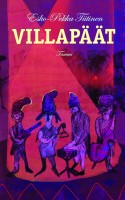 Villapäät
Villapäät
[Woollyheads]
Helsinki: Tammi, 2008. 134 p.
ISBN 978-951-31-4397-8
€ 17, hardback
Amid the angst and tangled human relationships that seem to dominate juvenile books, Villapäät provides young readers with ideals and the clothes to go with them, but eschews a market-driven focus on the self. 15-year-old Timppa and his friends form a band, and soon The Woollyheads will be the star of a charity fundraising concert. The global crisis and selfless relief work acquire a human face when Timppa sees a video on the life of Henry Dunant, the founder of the Red Cross – the only ‘trauma’ Timppa himself suffered as a child was caused by swallowing a Lego block. An important subsidiary role is played by a perceptive teacher who channels the youth into a beneficial, creative hobby. Esko-Pekka Tiitinen (born 1945) was awarded the 2008 Finlandia Junior Prize for Fiction for this book, his 16th.
New from the archive
17 March 2015 | This 'n' that
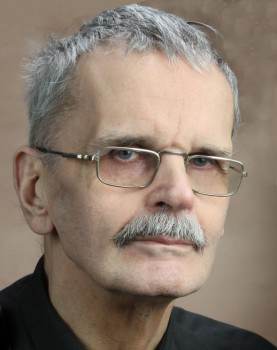
Gösta Ågren. Photo: Studio Paschinsky
Back in the day, in one of our periodic excursions into merchandising – the main criteria were that our goods should be flat (to fit into an envelope) and, of course, literary – we printed Books from Finland t-shirts. They were wildly popular – we must have sold, oh, dozens of them – and top of the list was a shirt with a laconic couplet by Gösta Ågren: ‘Don’t worry / it will never work out.’
Writing in Swedish and hailing from a small village in Ostrobothnia, in the far north-west of Finland, Ågren (born 1936) is the author of poems, essays and biographies. He may often choose to adopt the persona of a country curmudgeon, but the laconic tone of his poems belies a tenderness, a universalism, and an underlying political commitment, that speaks of a love of the world, a desire to make it into a better place.
The volume from which these poems are taken, Jär (‘Here’, 1989), won the Finlandia Prize for Literature in 1989.
*
The digitisation of Books from Finland continues, with a total of 372 articles and book extracts made available online so far. Each week, we bring a newly digitised text to your attention.
Briefcase man
31 December 2000 | Archives online, Fiction, Prose
Extracts from the novel Aura (Otava, 2000). Introduction by Mervi Kantokorpi
He was born in the Russian Grand Duchy of Finland the year the world caught fire. He learned to read the year of the revolution, and spoke two languages as his mother tongue border – language and enemy language, as he often used to say. He was proud of only one of his languages; the other, he loved secretly. He spoke one loudly, the other softly, almost in a whisper.
At night, on the telephone, he spoke far away – you could see it, even in the dark, from his expression, his half-closed eyes sometimes breaking into song. It was so beautiful and soft that I wept under the blankets and hated myself because of the effect that language had on me.
Stinking tinker Karelian trickster Russian drinker, little Russky’s dancing in a leather skirt, skirt tears and oh! little Russky’s hurt.
Count to ten, he said. But count in Finnish. Or Swedish, that’ll baffle them. And if they call you a Swedish bastard, it’s not so bad. I’ve taught you the numbers in Arabic and Spanish, too, but I don’t think you’ll be able to remember them yet. More…

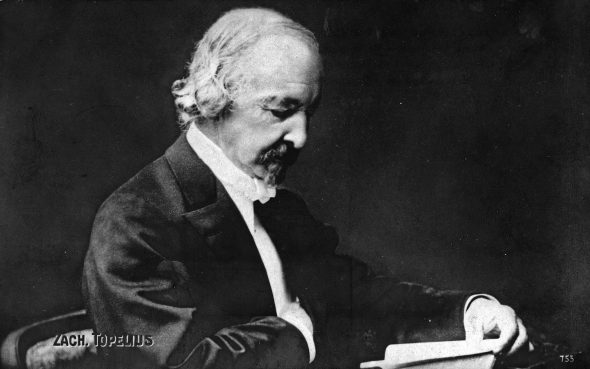
 What do Jesus, Aesop and the writer Daniel Katz all have in common? The key to the mystery lies in the second of the three names: fables are a part of all their works. Jesus spoke famously in (animal) metaphors, and the Greek writer Aesop is regarded as the father of the genre.
What do Jesus, Aesop and the writer Daniel Katz all have in common? The key to the mystery lies in the second of the three names: fables are a part of all their works. Jesus spoke famously in (animal) metaphors, and the Greek writer Aesop is regarded as the father of the genre.